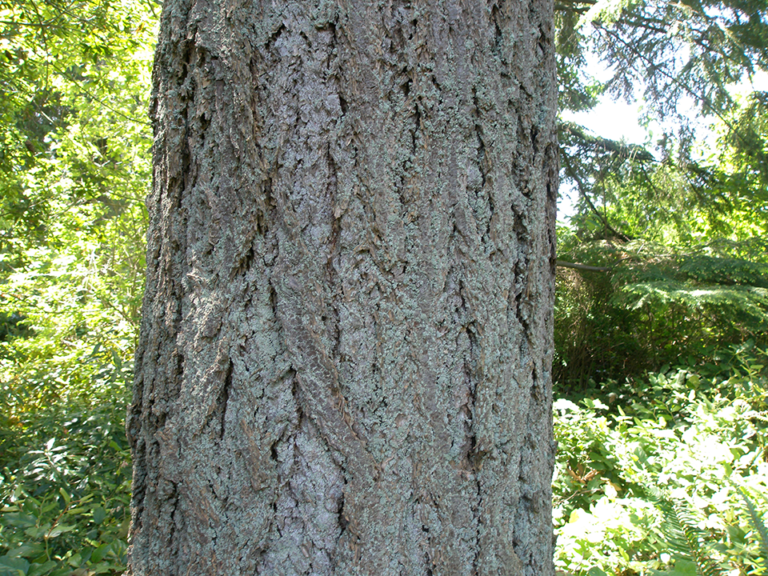Written for SFU ethnobotany class in 2020
- Introduction
This paper is about two different plantain plants, broadleaf plantain and rattlesnake plantain. I will give their descriptions and give their uses by Indigenous peoples of Coastal British Columbia. I will also give their names and uses by the Hul’q’umi’num’ people.
| sxu’enhween ( hul’q’umi’num’) broadleaf plantain Plantago major |
| sh-qulii-qep’nuts or kw’ulxeen (hul’q’umi’num’) rattlesnake plantain Goodyera oblongifolia |
- sxu’enhween
The plant sxu’enhween (common or broad-leaved plantain) is well-known to the Hul’q’umi’num’ people who use it for medicinal purposes. Its name comes from the word for frog sxu’enhw and the suffix =een “leaf”, so it literally means “frog leaf”, and locally it is referred to in English as “frog leaf” (Gerdts et al. 1997, p. 58) This is the bigger frog, the bullfrog, and not the tree frog, which is wuxus.
As you see in the photo, the sxu’enhween has many flat leaves and a one big stem per plant. There is a root underground.
According to Pojar and Mackinnon (2016, p. 329) it is uncertain whether it is an introduced plant or a native plant, but you find it everywhere. According to the Ecosystem Guide (2011, p. 14) it grows in moist and somewhat dry areas. It is widespread along side roads and trails, and even grows in the cracks in the sidewalks.
<https://en.wikipedia.org/wiki/Plantago_major>
The reason it is so widespread is that each plant can produce up to 20,000 seeds. These are blown around by the wind. The plant survives well even when it is trampled <https://en.wikipedia.org/wiki/Plantago_major>.
The plantain leaves are the part most commonly used for medicine. You break open the leaf and the moisture inside can be used for wounds and insect bites.
In July 2019, Thomas Johnny and I recorded my aunt Delores Louie, who is a herbalist, telling a story about the use of plantain in Hul’q’umi’num’ (on this website).
In Hul’q’umi’num’ culture, it is also used for a children’s game. You pull the leaves off the plant and count them and this is said to predict how many children you will have. (Ecosystem Guide 2011, p. 14). In my own childhood, we also played with this plant. We pulled that long stem out and then we folded the stem around the head and then we would chase each other and shot the head at each other, like an arrow. It was a great game as it didn’t hurt.
This plantain is known in many parts of the world and I found it interesting that according to Pojar and Mackinnon (2014, p. 329) the Europeans in olden days used wrap it in a rag around their heads to cure headaches.
- kw’ul’xeen
The plant kw’ul’xeen (rattlesnake plantain) is also well-known to the Hul’q’umi’num’ people who use it for medicinal purposes, very similar to the sxu’enhween. Its name is composed of an unidentified root √kw’ul’x and the suffix =een “leaf”. The root √kw’ul’x is very similar to the root √kw’utx, which forms the basis of the word for rattlesnake hwkw’etxum’nuts [hw-√kw’utx-m-nets-PROG] (Hukari & Peter 1995). There is some dispute about the name of this plant. But since kw’ul’xeen is the name shared to me, that is the one I will use here.
The kw’ul’xeen is a member of the orchid family, is an evergreen herb with variegated leaves. It grows in dry to moist, shady coniferous forests, preferring loam or humous, the same as mosses (Pojar & Mackinnon 2016, 120). It grows in groups or clusters (Ecosystem Guide sss, 37). It has a 20-35 cm tall stem, which is stout and stiff with dull-white to greenish flowers on top. The flowers come out in mid-July to September <https://en.wikipedia.org/wiki/Goodyera_pubescens> The cluster of leaves at the base are dark green with mottled or striped patterns, and so people think it looks like the markings of a rattlesnake (Pojar & Mackinnon 2016, 120). (Note: there are no rattlesnakes on Vancouver Island.)
(Picture from the Ecosystem Guide 2011, p. 37)
I am not familiar with this plant myself, so I have consulted the audio recording made in 1977 by Ellen White. She spoke in Hul’q’umi’num’ and then in English and I have provided the transcript of your words in English (on this website). Some of the uses that she mentions are use for sores and bee stings and mosquito bites. The paddlers used it as a liniment for sore muscles. It was also used reducing bleeding at childbirth. According to Pojar & Mackinnon 2016, p. 120) the Interior Plateau people also used this plant for child birth and Saanich, used the plant as a good luck charm.
References
Hul’qumi’num’ Treaty Group. 2011. Ecosystem Guide.
Gerdts, Donna, Leonard Edwards, Charles Ulrich, and Brian Compton. 1997. Hul’q’umi’num’ Words: An English-to-Hul’q’umi’num’ and Hul’q’umi’num’-to-English Dictionary. Prepared for the Chemainus, Nanaimo, and Nanoose First Nations and Nanaimo School District No. 68.
Hukari, Thomas E.; and Ruby Peter. 1995. Hul’q’umi’num’ Dictionary. Cowichan Tribes.
Pojar, Jim, and Andy MacKinnon (compilers and editors). 2016. Plants of Coastal British Columbia: Including Washington, Oregon, & Alaska.. Revised. Partners Publishing and Lone Pine Publishing. BC Ministry of Forests. Vancouver, BC.
White, Ellen (Kwulasulwut), 1977. Hul’q’umi’num’ Plants and Animals. (audio recordings)
